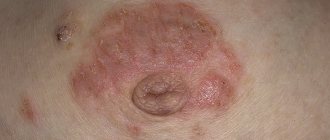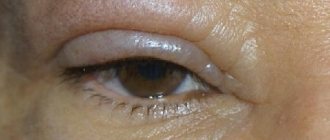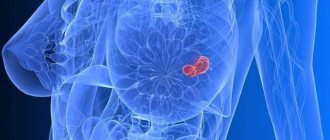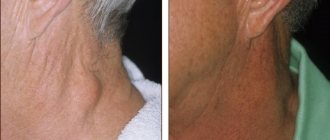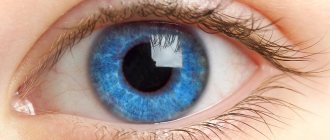ATTENTION! From January 2022, a new medical center will open for you at the address: Dmitrovskoye Shosse, 81 (5 minutes walk from the Selegerskaya metro station), where you can receive a wide range of medical services, including CT (computer tomography).
- home
- Surgery
- Breast abscess surgery
Breast abscess is an inflammatory disease in which a cavity forms in the tissues of the organ. The affected area fills with pus.
Causes and symptoms of breast abscess
The main reason for the formation of an abscess in women is considered to be infection of breast tissue by opportunistic bacteria, through the milk ducts or as a result of damage to the epithelium.
An abscess can be caused by:
- lactation mastitis;
- blockage of the milk ducts and the formation of cysts in them;
Also after hypothermia, sepsis, dishormonal changes.
Men rarely suffer from this pathology.
Symptoms of a breast abscess include:
- breast pain;
- increased body temperature (37.1 - 38.0);
- the appearance of a compaction near the abscess;
- hyperemia, swelling of the skin;
- in women, milk changes in color, smell, consistency.
When the first symptoms appear indicating the development of a breast abscess, you should seek help from medical professionals.
In the medical department, operations are performed to remove a breast abscess. The clinic employs experienced mammologists, gynecologists and surgeons.
Preparation
To prepare for surgery, the surgeon performs a visual inspection and palpation of the inflamed area.
Additional diagnostic measures are carried out:
- X-ray of the breast (pregnancy and lactation are considered contraindications);
- Ultrasound of the mammary glands and lymph nodes;
- computed tomography (if indicated);
- bacterial culture of secretions for sterility and sensitivity to antibiotics;
- clinical, biochemical studies of blood and urine;
- biopsy and puncture if oncogenicity is suspected.
It is not recommended to consume food or liquid for eight hours before surgery if general anesthesia is used.
Diagnostics
Purulent accumulations located near the surface of the skin are easily diagnosed during an external examination based on characteristic signs. A throat abscess is detected during examination by an otolaryngologist.
Diagnosis of an abscess located deep inside requires special laboratory and instrumental studies:
- a biochemical blood test will show the inflammatory process in the body with an increased content of leukocytes and ESR, as well as shifts in protein fractions;
- radiography is used to detect subdiaphragmatic, intraosseous and pulmonary collections;
- Ultrasound is aimed at identifying accumulations in the abdominal cavity and liver;
- computed tomography, as an auxiliary method, detects purulent accumulations in the brain, lungs and liver, subdiaphragmatic region and inside bones and joints;
- encephalography of various forms (echo-, electro-, pneumo-) is aimed at studying the brain;
- laparoscopy and angihepatography are used as an auxiliary method for examining the liver;
- puncture of the abscess and culture of its contents are performed to determine the specific type of pathogen and its sensitivity to certain antibacterial drugs.
Most often, purulent accumulations are caused by streptococci, staphylococci in combination with various kinds of bacilli, but now other aerobic and anaerobic bacteria are also becoming widespread.
Doctors surgeons
Dzhadzhiev Andrey Borisovich Surgeon
Cost of admission 1500
₽
Make an appointment
Marynich Alexander Alexandrovich Vascular surgeon, phlebologist, angiologist
Cost of admission 1500
₽
Make an appointment
Myshlyaev Anton Vsevolodovich Surgeon coloproctologist
Cost of admission 2000
₽
Make an appointment
Operation
Treatment of a breast abscess involves opening the purulent capsule and draining the contents. The operation is performed in a hospital setting under local anesthesia. KDS Clinic has at its disposal only the best surgeons who use the safest and most effective methods in practice:
- surgical intervention - performed by resection, removal of pus, installation of drainage and partial suturing of the wound;
- aspiration - using a syringe with a needle to puncture and remove purulent formation.
The operation to remove a breast abscess lasts from 30 minutes to several hours.
Treatment
The key to successful treatment of an abscess lies in its timely detection. This is why it is so important to immediately consult a doctor if you have any symptoms.
Treatment principles:
- Only superficial purulent accumulations can be treated at home under the supervision of a doctor. All other cases require hospitalization;
- opening and drainage of the area of purulent accumulation is carried out by a surgeon; it is necessary to remove the abscess;
- drug therapy is based on taking the following drugs: antibacterial agents, antipyretics, painkillers, drugs to reduce intoxication, vitamin complexes, immunomodulators and others;
- balanced nutrition, gentle bed or semi-bed rest, and rest;
- physical therapy, physiotherapy and sanatorium-resort treatment are possible as rehabilitation measures during the recovery stage.
Special ointments are used as adjuncts in the treatment of subcutaneous fatty suppuration.
Purulent accumulations in the lungs are initially treated with broad-spectrum antibiotics, and after receiving the results of culture culture studies, adjustments are made to the medications taken. In severe cases, bronchoalveolar lavage may be performed. If there is no positive effect of classical therapy, an abscess operation is forced to remove the affected part of the organ.
Treatment of purulent accumulations in the brain is carried out using surgical methods. Contraindications for removal of accumulations, namely the location in the deep parts of the brain, necessitates washing out the purulent contents by puncture. Treatment of purulent accumulations at home using traditional medicine is unacceptable.
Rehabilitation
The full rehabilitation period is 3-4 weeks. In the first days, the application of a sterile bandage is indicated, which is performed by junior medical personnel. The duration of hospital stay can range from several hours to 3 days. Patients are provided with comfortable rooms for the entire duration of their hospital stay. 24-hour care is provided if necessary.
To avoid the development of complications, antibacterial therapy can be prescribed; if the area is sore and inflamed, anti-inflammatory and painkillers can be prescribed. After complete healing and scarring, physiotherapy and immunotherapy are recommended.
Prevention of breast mastitis
To prevent breast mastitis
You should follow the rules of personal hygiene, prevent stagnation of milk and avoid cracks and abrasions on the nipples. Please note that it is necessary to wash the nipple before and after feeding. If we talk about the treatment of cracked breasts, then sea buckthorn oil, white streptocide and starch will help you here.
It is also necessary to remember special rules when breastfeeding
:
- periodically change the position of the child so that the pressure on different parts of the nipple is uniform;
- if after feeding the baby does not let go of the nipple, lightly pinch the baby’s nose so that he pushes the nipple out;
- After feeding, it is recommended to dry the nipple. To do this, he must stay in the air for another 2-3 minutes;
- You should express all remaining milk without touching the nipple with your hands (it is better to use a breast pump);
- change your underwear daily, boil and iron your bra thoroughly.
Complications
Without timely treatment of an abscess, there is a high probability of complications developing in the form of:
- formation of an open purulent fistula;
- phlegoma - spread of inflammation and infection to nearby tissues and organs;
- rupture of an abscess into the milk ducts;
- sepsis, with possible fatal outcome.
Also, as a result of removal of the abscess, the development of postoperative complications is possible:
- bleeding;
- hematomas;
- re-infection;
- long healing period;
- lactostasis.
The likelihood of a complication depends on the individual characteristics of the patient’s body.
Forms of the disease and routes of infection
An abscess can be an independent disease, but in the vast majority of cases it appears as a complication of an underlying disease, for example, purulent tonsillitis causes a peritonsillar abscess. Pathogenic microorganisms have a lot of ways to get inside - through damage to the skin as a result of injuries and cuts, from other organs and tissues that were previously infected, through non-sterile equipment during surgical procedures, and others.
Forms of the disease are classified according to the location of purulent accumulation:
- retropharyngeal abscess;
- peripharyngeal;
- peritonsillar abscess;
- subdiaphragmatic;
- soft tissues;
- periodontal;
- appendicular and others.
Causes and symptoms
The main reason for the formation of an abscess in women is infection of breast tissue by opportunistic bacteria, through the milk ducts or as a result of damage to the epithelium. An abscess can be triggered by:
- lactation mastitis;
- blockage of the milk ducts and the formation of cysts in them;
Also due to hypothermia, sepsis, dishormonal changes. Men rarely suffer from this disease.
Symptoms of a breast abscess include:
- breast pain;
- prolonged increase in body temperature (37.1 - 38.0);
- the appearance of a compaction near the abscess;
- hyperemia, swelling of the skin;
- in women, milk changes in color, smell, consistency.
When the first symptoms appear that indicate the development of a breast abscess, you should immediately seek the help of specialists. Our medical center will help you quickly overcome the disease and become healthy.
Breast cancer: 9 signs that should alert you
05.10.2021
The insidiousness of breast cancer lies in the fact that in the first stages the disease is usually asymptomatic, and very often women turn to the doctor when it is almost impossible to help. But if cancer at an early stage, the chance of recovery is almost 100%. To prevent a tragedy, it is necessary to conduct a self-check once a month for the presence of a tumor in the chest .
What to look for during a breast exam : Milk lobules feel like soft peas, lymph nodes feel like soft beans, and cancerous tumors often feel hard, immobile, and look like lemon seeds.
Symptoms of breast cancer
Symptoms of breast cancer can be very different. They depend on the type of tumor, its size and location. Lumps and lumps are not necessarily a symptom of cancer , although they are quite common. Among the symptoms that should also alert you: fluid discharge from the nipple, its retraction, enlarged veins , changes in the skin around the nipple - peeling, redness; change in the shape of the mammary gland , the appearance of asymmetry that did not exist before.
- Feeling a lump You may notice a lump in your chest . This may be a normal part of menstruation or breastfeeding. However, a breast that doesn't go away or gets bigger can also be a sign of breast cancer. The lump may be in the skin (a sign of inflammation) or deeper in the breast . It occurs when cancer cells block blood circulation to the breast (through the blood or lymphatic vessels ) or a tumor grows near the surface of the skin. Note: Lumps should not be confused with “breast density,” which can only be determined through a mammogram exam.
- Indentation If the indentation in your chest does not go away, it may be a sign of cancer . This symptom occurs when a tumor (lump) deep in the breast pulls the skin inward, causing an indentation. The hole is easier to notice when you raise your arms up.
- A crusty nipple A crusty nipple can be a harmless skin condition or a sign of breast cancer, or Paget's disease. This occurs when cancer cells develop inside the breast and live in the nipple, creating a red or white crusty surface. It may be painful and not go away.
- Redness, burning This type of cancer blocks the flow of lymph in the breast , causing swelling and redness, but without an obvious hard lump. The skin of the breast may also be pink, reddish-purple, or blue-tinged. This symptom may be difficult to see on a mammogram. Inflammatory breast cancer is so aggressive that it can progress quickly. If antibiotics do not eliminate symptoms, it is better to consult a specialist.
- Unexpected discharge Discharge from the nipple is common and in most cases it is harmless (benign). It is usually associated with infection, pregnancy or breastfeeding. However, if fluid is leaking from the breast for other reasons, you should see a doctor , especially if it is clear or contains blood .
- Ulcers . Cancer can sometimes destroy the skin of the breast , creating an open wound. The infection may cause a foul odor and/or discharge.
- Bulging veins . This symptom is rare. It is most often associated with weight gain, breastfeeding, or Mondor's disease. However, if veins become more prominent on the skin, chest , or collarbone, this could be a sign of cancer . Note. "Swelling veins" are one of the least described symptoms breast cancer , usually classified under the general category of "other atypical changes" or "skin changes". Still, enlarged veins may indicate blockage of blood vessels due to tumor growth.
- Change in size or shape. Usually one breast is different in size and shape from the other. Breastfeeding may also cause changes in the size or shape of the breasts . But if one breast changes size and becomes swollen, and it's not related to your menstrual cycle, it could be a sign of cancer .
- Solid tumor. The most common sign of breast cancer is a lump that is located deep in the breast . It feels hard, like a lemon seed, and is usually immobile. It is not always easy to detect. A mammogram can detect a lump long before you feel it.
Most lumps turn out to be harmless, such as a fluid-filled cyst or fibroadenoma. But if you notice a hard lump (or any change) that won't come or go away, don't ignore it. The earlier cancer , the easier it is to treat . If you notice any suspicious symptoms, consult your doctor .
Published in Oncology Premium Clinic
